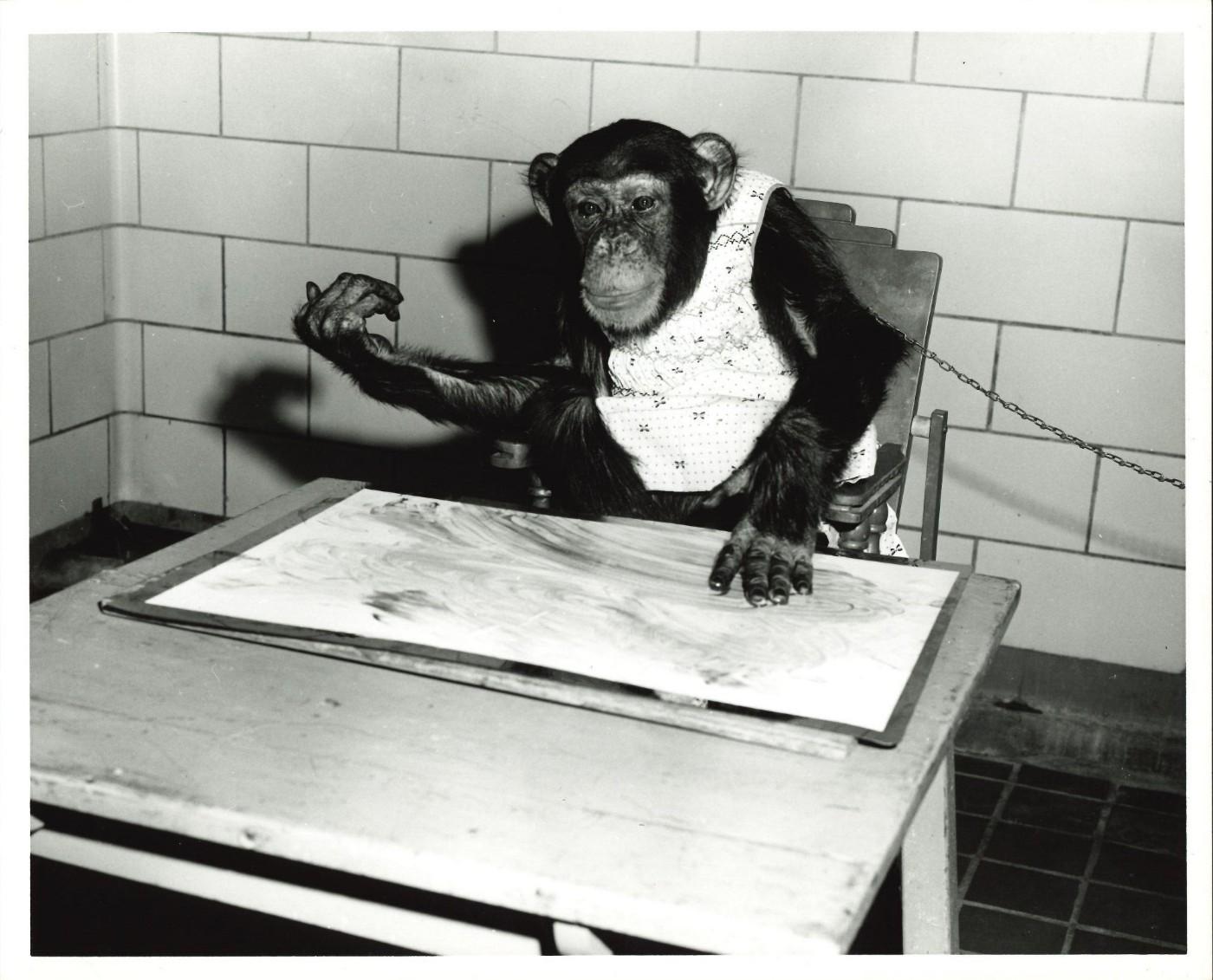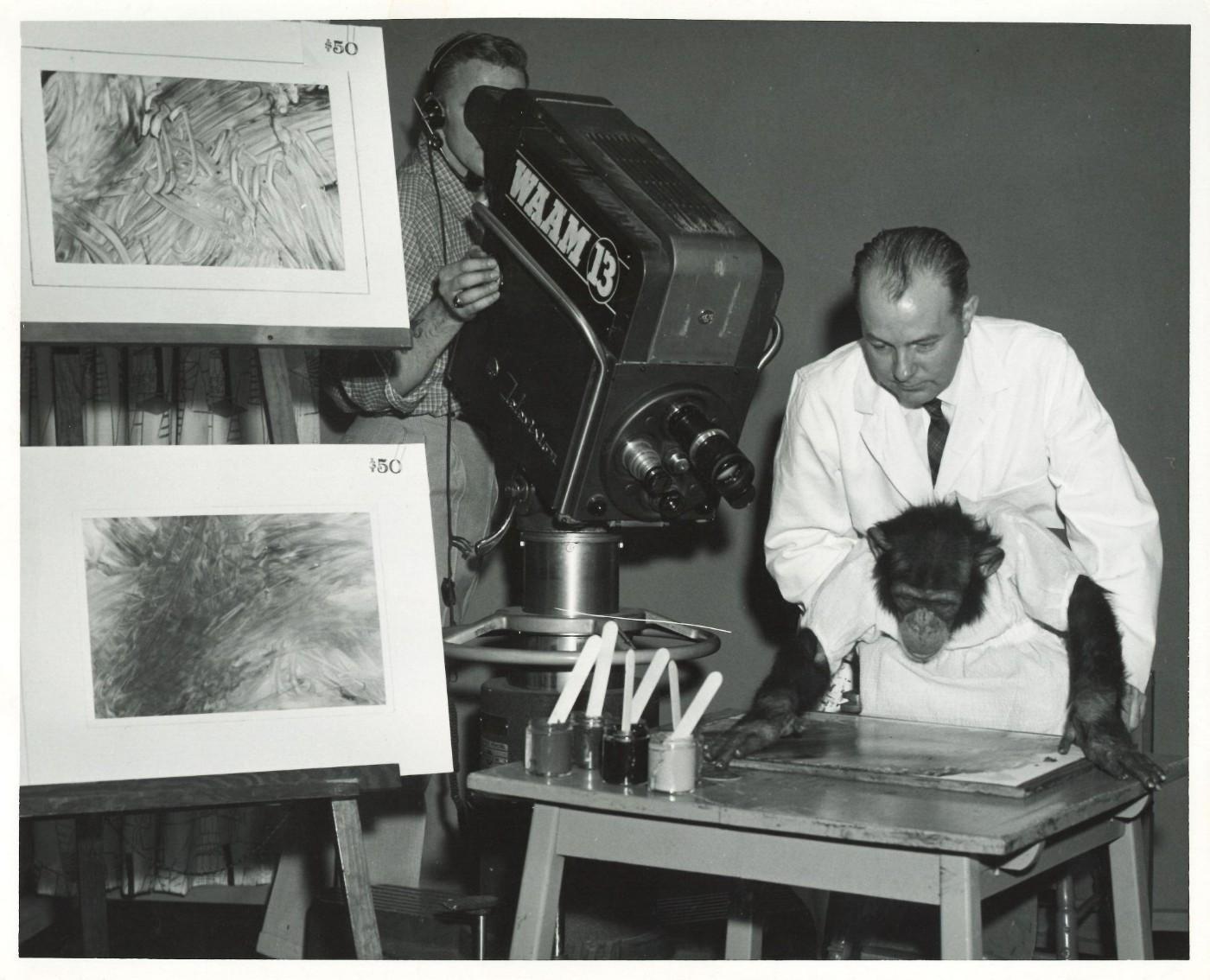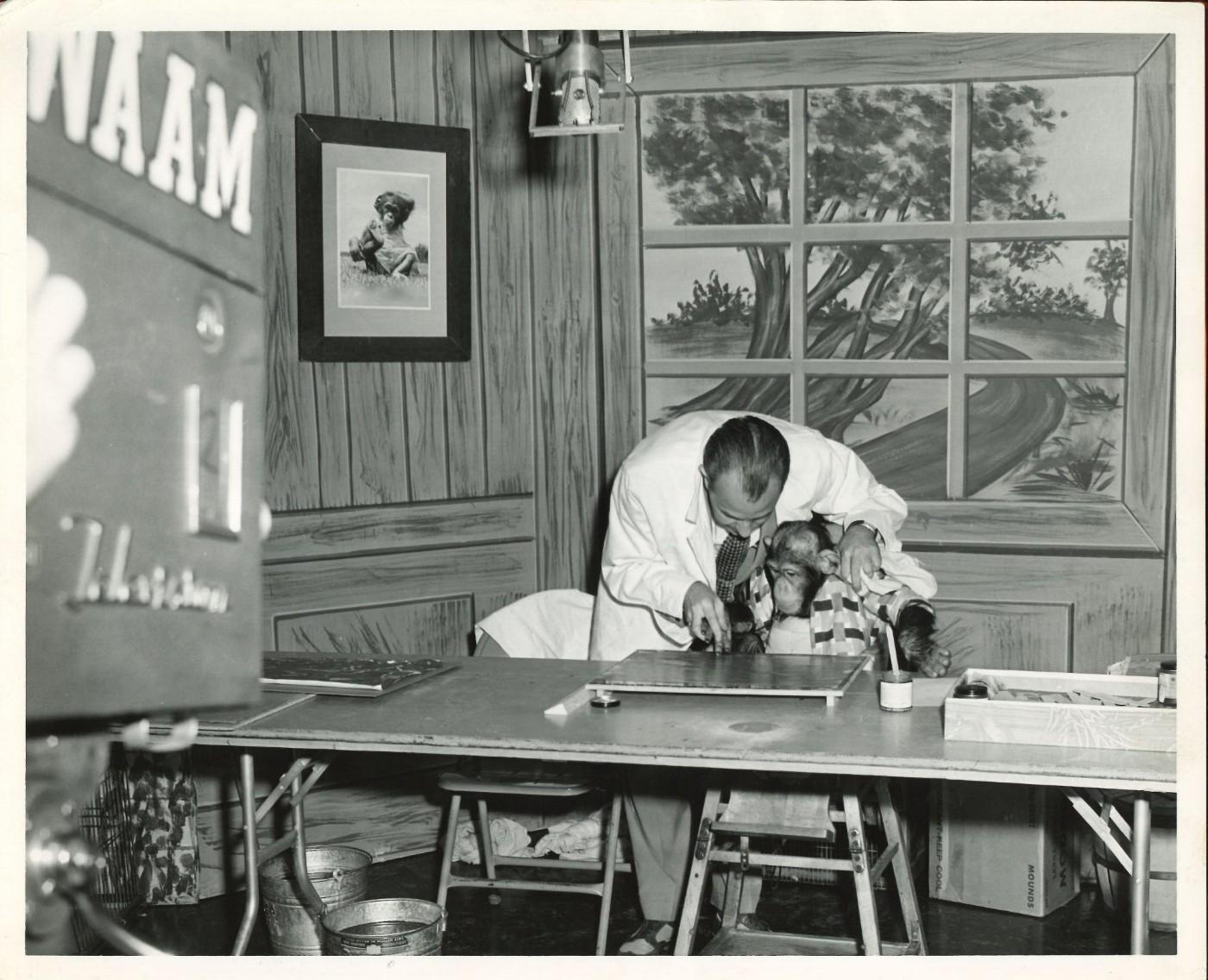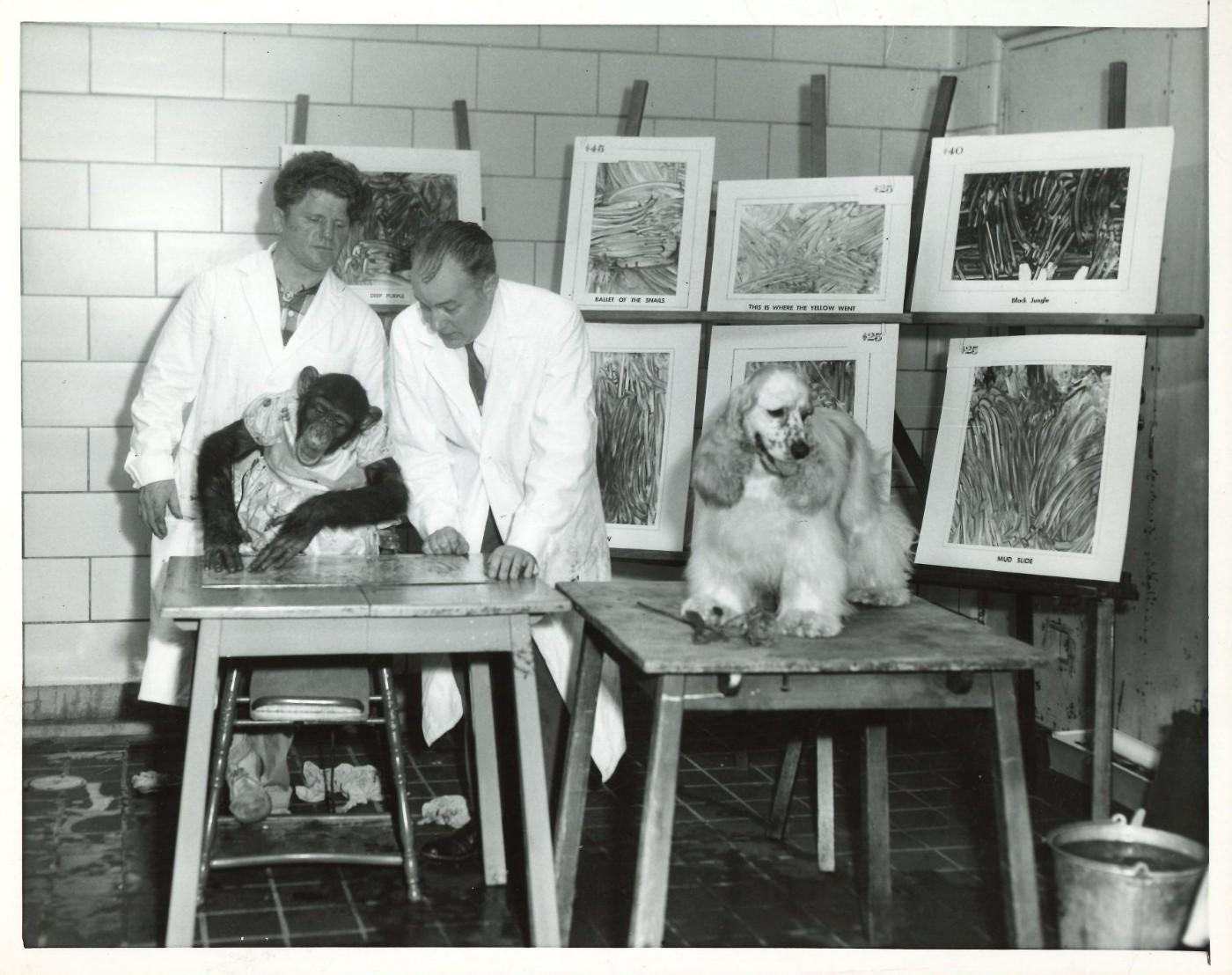This year, Waters came out with his ninth book, Mr. Know-It-All: The Tarnished Wisdom of a Filth Elder. Published by Farrar, Straus and Giroux, it’s a collection of essays in which he offers opinions and advice about a wide range of subjects. He insists he isn’t being tongue-in-cheek, but sometimes it’s hard to tell. In an essay about the art market, he starts by observing that the current high prices for blue-chip works make it difficult for anyone to become a collector.
“The days of going in that one cutting-edge gallery you thought only you knew about and buying an artwork for under $5,000 by an artist who’s having a second show there after getting his first good review are long over,” he laments.
And that’s what brings him to animal art–specifically, art by chimps, gorillas, orangutans and other primates. (Chimps aren’t the same as monkeys, but both are considered primates, as are humans, according to the Jane Goodall Institute.)



































